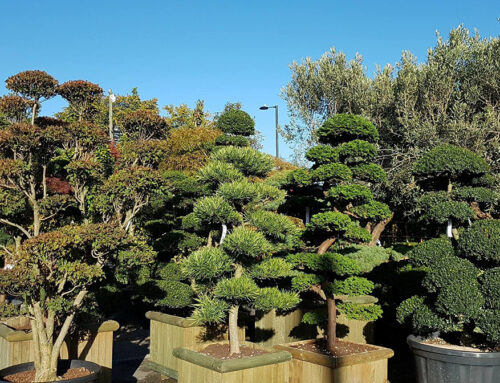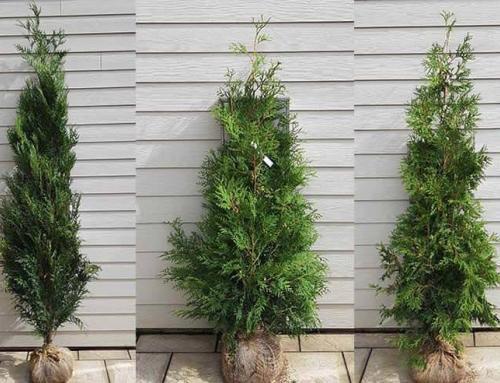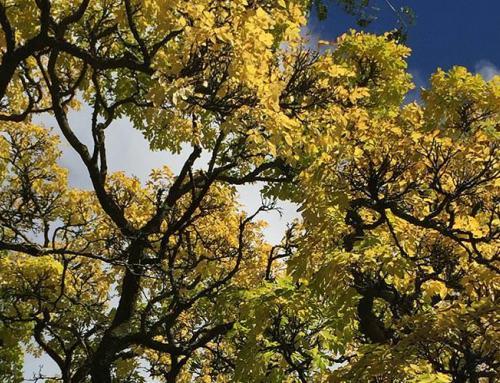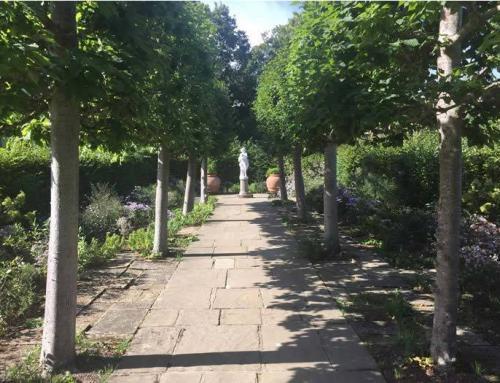Whether you’re a long-term dog owner or you’ve recently welcomed a curious young puppy, you’ll want to create a dog friendly garden. We all recognise a safe outdoor space to entertain them is important.
But what if you’re green fingered and love your plants – can the garden suit you both?
Yes! With a few adjustments you can both enjoy the outdoor space. Let’s take a look at how to create a beautiful, dog friendly garden.
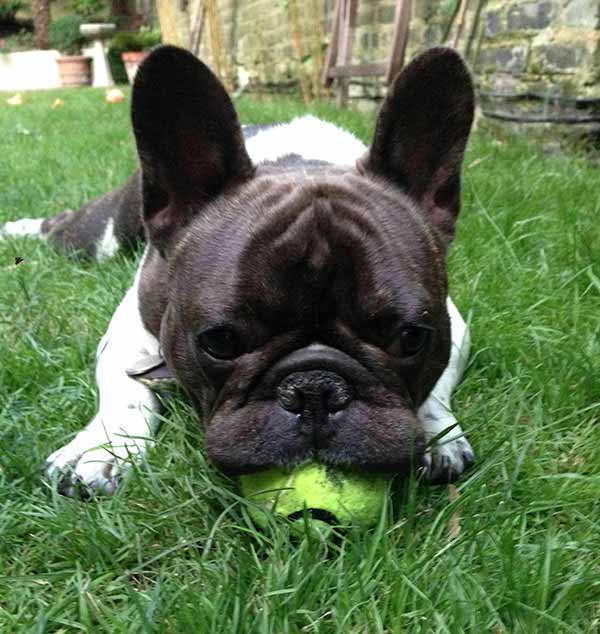
What dog doesn’t enjoy a good garden?
Beware Toxic Plants
We’re not saying you need to dig up plants. If you’ve grown them for years and your dog isn’t bothered it’s probably safe to leave them. New dog owners or those of us with insatiable chewers might need to exercise caution.
Dog toxic plants have a range of effects from itchy dermatitis to fatalities. The Dog’s Trust have a toxic plant list but here are the plants they list as potentially fatal to dogs – and therefore the ones you might want to avoid.
Amaryllis bulbs, angel wings (caladium species), large quantities of azalea, castor bean, daffodil bulbs, dumb cane (dieffenbachia amaena), bergenia – that’s elephant’s ears, jessamine (cestrum species), thorn apple, larkspur, mistletoe, narcissus bulbs, nightshade, oleander, rhododendron, wild cherry trees, and yew.
Of course, ragwort or any type of hemlock are toxic to just about everything including humans.
Other Garden Dangers
Other potentially harmful garden products include cocoa bean shell mulch which is a sweet-smelling by-product of the chocolate industry, sharp tools, poisons, insecticides, de-icer which is also sweet, and of course slug pellets.
In fact, slugs and snails are a problem to gardeners and dog owners alike. Not only do they eat your plants, but some dogs seem to like eating snails!
This can mean any poison they’ve ingested may harm your dog. Slugs and snails also carry lungworm. If your dog is coughing or has trouble breathing it’s best to consult a vet. They may have been enjoying too many snail lunches.
What Are Dog Friendly Plants?
If the list of dog toxic plants has you frowning, don’t feel too disappointed. If you love a plant that’s toxic to your pooch you can still grow it, but perhaps it would be better suited to an area your dog can’t access such as a fenced off space or in a raised bed.
There are still plenty of beautiful plants to choose from to counteract any disappointment. Here’s a selection of our favourite dog safe shrubs.
All types of roses – phew! Check out Silver Anniversary which is a pure white beauty. There’s reliable winter blooming viburnum too – pink Gwenllian is popular and holds the RHS AGM.
Another winter bloomer is Mahonia Soft Caress a tough but beautiful grower that won Plant of The Year at 2013 Chelsea Flower Show.
There’s also astilbe, nepeta and hardy geraniums, but not pelargoniums. Pelargoniums are those frost tender geraniums with thick leaves. They can be toxic so go with hardy Geranium sanguineum var. striatum it’s not a catchy name but this pink striped native to the Cumbrian Coast holds the RHS AGM and is dog friendly.
Elaeagnus is an evergreen that’ll brighten the garden safely, the Limelight cultivar is a variegated stunner. Cotoneater Lucidus is great for hedging and has bright red berries, and speaking of red, the popular Photinia Red Robin Compacta has bright red leaves and doesn’t get leggy.

Create a beautiful and safe garden for your dog by choosing the right plants.
Shall we go on?
Why not!
Buddleia is dog safe. Lilac Chip Butterfly Bush is one of the new dwarf hybrids. Fragrant and beautiful Abelias such as Sunshine Daydream is a variegated evergreen beauty that always looks good, and let’s not forget the staple backbone shrub Aucuba Japonica also known as the Spotted Laurel. It holds the RHS AGM and doesn’t bother dogs and is ideal addition when looking to create a dog friendly garden.
We stock all of these plus more – and there’s another reason to buy dog-friendly plants from us.
Dogs are less likely to damage established plants and that’s what we specialise in. Large mature shrubs and perennials can withstand an excited dog digging around the roots and running over them. Small, tender shrubs might not survive the paws or a cocked leg!
So that’s the planting sorted – what else can help keep Lassie safe and happy in the garden?
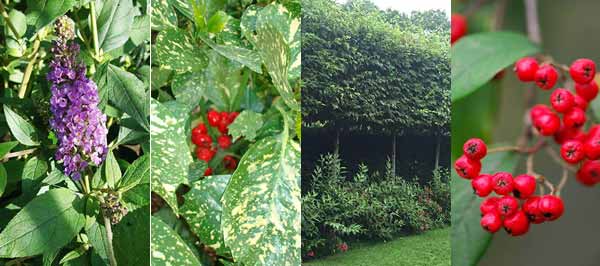
Dog-safe plants include the Lilac Chip Butterfly Bush, Sunshine Daydream, Spotted Laurel and many more.
Secure and Attractive Fencing
Safe, secure fencing is a must.
Loose dogs cause all sorts of problems with neighbours and in the worst circumstances your dog could be stolen from your garden. This is, unfortunately, becoming more frequent so lock all gates securely and add height so people can’t see over the fence.
Fast growing shrubs such as this evergreen Eleagnus grown over security wire fences and wooden panels green up their harsh look. You could investigate pleached trees too if you wanted a full screen on top of your fence.
Fencing off a specific area for your dog can work well. It’s a smaller area to keep safe and you can include lots of stimulation.
Fences and evergreen privacy screens can also be used to protect areas of the garden you’d prefer Rover didn’t go in – like a veggie patch for example!
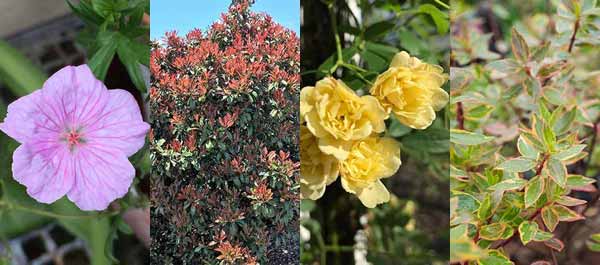
Doggie-safe Flowering Beauties!
A Digging Area
Dogs do love a good old dig. It’s healthy exercise, but that doesn’t mean you want craters across the lawn and in your garden borders.
Cover up exposed soil as dogs will always prefer to dig soft earth – your borders are prime digging territory! To distract them create a sandpit or loose bark area for digging and then encourage your dog to scrabble about there with buried treats. Keep an eye on puppies who might eat the bark pieces.
A Vantage Point
Dogs like lots of views – why not create a mound from soil, or cover an old upturned table or planter in artificial grass to make Rover king of the world.
Sun and Rain Proof Shelter
All animals seek shelter from sun, rain and wind, so it’s nice to make a spot they can comfortably relax in.
A tree will create instant shade. Try this Photinia Red Robin standard tree. It’s dog friendly and casts lovely dappled shade. Large shrubs can also provide shade – any of the above listed shrubs will provide some shelter.
In wet, cold weather a kennel, a child’s playhouse, or a Crufts style tunnel will keep your pooch dry and happy. Our BBQ Shelter is perfect for re-purposing into a dog shelter. Send us a photo if you do this!
Lawns
Free ranging dogs and a perfect lawn can’t co-exist, but if you don’t want to fence off a space, sow hardwearing lawn seed and if you spot your dog urinating rinse it down with a watering can to prevent the grass turning yellow.
Pick up all messes soon as possible and use a good quality dog safe lawn feed during the year.
Create A Dog Toilet
Counter intuitive you might say, but build your dog’s toilet area near the house. This is because it gets dark early here in the UK and it’s often wet. The last thing you’ll want to do late at night is walk your dog to the far garden corner for their final pee!
Block off the toilet area view with evergreen shrubs like Spotted Laurel or use privacy screen trellis. Bark or free draining stones make an easy clean base.
Area For Cleaning Muddy Paws
Who’s had their muddy dog bolt into the house and destroy the carpet within 30 seconds? I knew it wasn’t just me!
A clean-up area by the back door is a soft furnishings saver.
Use evergreens or trellis to build a shelter from the elements. Site it near a tap or stash a full watering can or a pressure sprayer there (be careful not to sting your dog’s feet with too much pressure).
Build a floor area from bark or other soft draining materials to stop mud clinging to your dog’s feet when you add the water. A quick rinse, a towel rub down, and you’re done.
Need More Inspiration?
Even the smallest outdoor space can be made into a dog friendly area. If you need more inspiration here’s a video of The Dog’s Trust’s dog friendly garden from the 2016 Hampton Court Flower Show.

